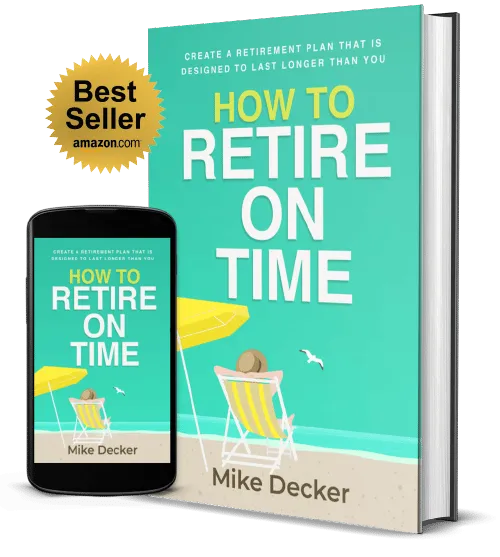For those who enjoy their research…
Articles & Press
Read our articles, some written for other publications, others written exclusively for the Kedrec audience.

What Is Indexed Universal Life Insurance and How Does It Work?
This article was originally published on Kiplinger.
Life insurance is often put into two groups. You’ve got term life insurance, which has no cash value unless you pass. Or you’ve got whole life insurance, which has a cash value, but you’ve got to keep paying those premiums for life. There’s another type of life insurance that you can consider that offers funding flexibility and a cash-value component — universal life insurance.
There are three types of polices within the universal life category: variable universal life, fixed universal life and indexed universal life (IUL). In this article, we'll explore how IUL works so that you can determine if it is right for you.
Please note that these are extremely complex products that should be set up and guided by a trusted financial professional. Your current health may have a major impact on the policy and its associated fees, which will influence whether it makes sense for you to fund it. Please proceed with caution when considering an IUL, or any investment product, for that matter. There is no such thing as a perfect investment.
First, an explainer about indexed universal life insurance (IUL)
IUL is a type of permanent life insurance that provides a death benefit to your beneficiaries. It offers a cash-value component that can grow over time. You typically want to fund an IUL policy over a series of years, typically five to 10, rather than all at once, to maintain its tax-free status. Unlike many insurance policies that require you to keep paying premiums so the policies do not lapse, an IUL allows you to have the flexibility to adjust or even stop paying premiums if your policy’s cash value is sufficient to support the policy costs.
An IUL can grow the cash value by crediting interest to the policy based on the performance of an external market index like the S&P 500. The cash-value growth that is based on the underlying index is subject to caps, floors and participation rates. Please note that the policy is never actually invested in the market or index itself and that it doesn’t lose money due to negative market performance.
However, the policy will deduct fees and any interest from policy loans each year. Especially during years in which no interest is credited, this will reduce your policy’s cash value. You may be able to minimize some costs in the policy by adjusting different parts of the policy.
For example, after you have funded the policy over several years, you may decide to lower the death benefit, assuming you do not need as much coverage, which should help lower some of the internal insurance costs and hopefully help the cash value of the policy increase over time.
Understanding IUL loans
What’s interesting about an IUL is that the policy’s cash value may grow based on the gross amount even if you take out a loan. Let’s say your policy has a cash value of $100,000, and you pull out $15,000 as a loan. The policy still has a gross amount of $100,0000 because the $15,000 is a loan against the policy, allowing the $15,000 to be tax-free. Now, let’s say that after a year, the policy earns a 10% interest credit. The policy's cash value would grow by $10,000, not $8,500, because the interest is based on the gross amount of $100,000 despite the loan.
As I’ve said before, though, there’s no such thing as a perfect investment. The $15,000 that was borrowed against the policy will be assessed loan interest. For the sake of example, let’s say that the loan interest is around 3%. If the policy earns an interest credit that’s more than 3%, that’s called positive arbitrage, because you are making more money than you are paying in loan interest.
Think of the landlord who charges their renters more than the cost of the monthly mortgage. This is positive arbitrage for a real estate investor. As long as the landlord can keep renters in the house, there may be less reason to pay the mortgage off quickly. Over time, the renters will help do this with their rent payments. When it comes to an IUL, as long as the underlying index allows for more interest credits that are higher than the interest rate on a loan, you could still come out ahead.
However, it is crucial to understand that the loan payment will need to be made regardless of the underlying index performance. Let’s say markets are down and the policy receives 0% interest. That means you’d still have to pay whatever the loan is. In the example above, that would be 3% of the $15,000 (3% x $15,000 = $450). This is one of the risks you take when utilizing an IUL in a retirement plan for income. If the underlying index doesn’t perform consistently, the poor performance in the underlying index could slowly eat away at the policy’s cash values with fees and possible loan payments.
Please note that IULs are typically complicated and nuanced financial products that must be set up correctly. Once set up, they must be managed, or at least monitored, annually.
Now that we’ve covered the basics of how IULs work, you're ready for part two of this series, Retirement Planning With Life Insurance, which discusses three potential ways people might use them within their retirement plans. The first strategy demonstrates how you might use an IUL as a tax-free source of income with the intention of keeping your overall tax liabilities low. The second strategy is a way to convert pre-tax dollars into tax-free dollars. The third strategy can help alleviate tax liabilities from pensions and other pre-tax income streams.
Closing thoughts
Life insurance is often thought of as an estate planning tool or a just-in-case part of a financial plan. When structured and funded correctly, indexed universal life insurance policies can offer many more benefits.
Before you decide to purchase a policy, make sure you spend time learning about the risks and detriments of IULs. Remember, there’s no such thing as a perfect investment. If you want to explore using an IUL, consider finding a financial adviser who works with a CPA or enrolled agent who can help you discover how an IUL could be utilized to help support your unique financial goals.
Ready To Get Your House In Order?
Click the button below and tell us what you want.
Our comprehensive services are designed to help you fully experience life (financially, at least).
CREATE A RETIREMENT PLAN DESIGNED TO LAST LONGER THAN YOU
HOW TO RETIRE ON TIME
In this book, you'll discover:
How to run the numbers and see when you can afford to retire (It’s easier than you think).
Learn why many common retirement income strategies may be riskier than you realize.
Discover proprietary retirement income strategies that may be able to help you have more control over your income while potentially lowering your risk.
How to proactively anticipate and manage your retirement during the market's ups and downs.
Why it’s typically not too late to course-correct. If you have already retired, there’s still time to get on the right path.
And much more!

This book is a marketing publication for Kedrec, LLC

Explore Your Lifestyle and Legacy Potential
This content on this website is provided for informational purposes only and is not intended to serve as the basis for financial decisions. It should not be construed as investment advice or a recommendation.
Investment advisory services are offered through Kedrec, LLC, a Kansas state Registered Investment Advisor. Insurance products and services are offered through its affiliate, Kedrec Legacy, LLC. We are not affiliated with the US government or any governmental agency.
Investing involves risk, including possible loss of principal. No investment strategy can guarantee success, ensure a profit or guarantee against losses. Insurance product guarantees are backed solely by the financial strength and claims-paying ability of the issuing company.
Insurance and annuity products involve fees and charges, including potential surrender penalties. Annuity withdrawals are subject to ordinary income taxes and potentially a 10% federal penalty before age 59-1/2. Life insurance generally requires medical and potentially financial underwriting to qualify for coverage. Optional features and riders may entail additional annual cost. Product and feature availability may vary by state.
Tax, legal and estate planning services are available only to members who purchase the Fresh Wealth Plan Membership level. Tax, legal and estate services provided by our network of tax and legal professionals. Always consult with qualified tax/legal advisors regarding your unique circumstances.
This content on this website is provided for informational purposes only and is not intended to serve as the basis for financial decisions. It should not be construed as investment advice or a recommendation.
Investment advisory services are offered through Kedrec, LLC, a Kansas state Registered Investment Advisor. Insurance products and services are offered through its affiliate, Kedrec Legacy, LLC. We are not affiliated with the US government or any governmental agency.
Investing involves risk, including possible loss of principal. No investment strategy can guarantee success, ensure a profit or guarantee against losses. Insurance product guarantees are backed solely by the financial strength and claims-paying ability of the issuing company.
Insurance and annuity products involve fees and charges, including potential surrender penalties. Annuity withdrawals are subject to ordinary income taxes and potentially a 10% federal penalty before age 59-1/2. Life insurance generally requires medical and potentially financial underwriting to qualify for coverage. Optional features and riders may entail additional annual cost. Product and feature availability may vary by state.
Tax, legal and estate planning services are available only to members who purchase the Fresh Wealth Plan Membership level. Tax, legal and estate services provided by our network of tax and legal professionals. Always consult with qualified tax/legal advisors regarding your unique circumstances.
